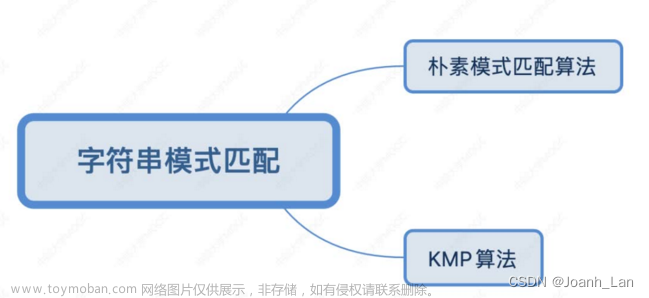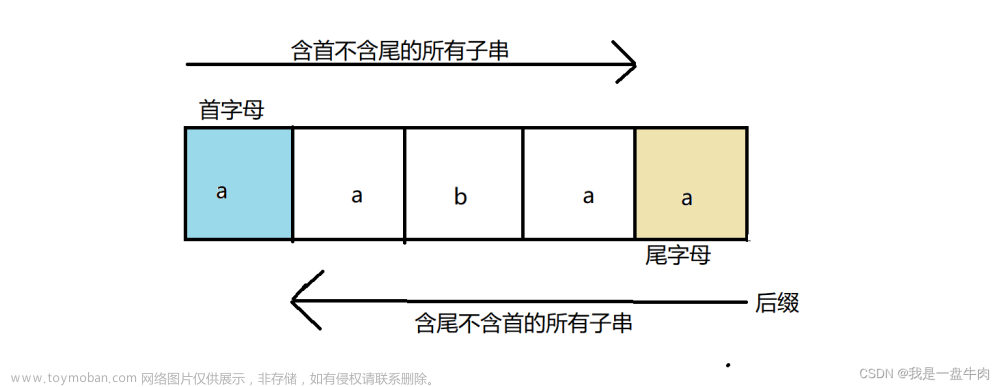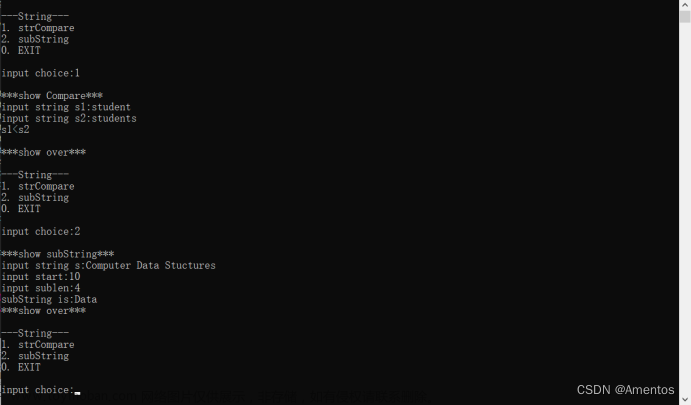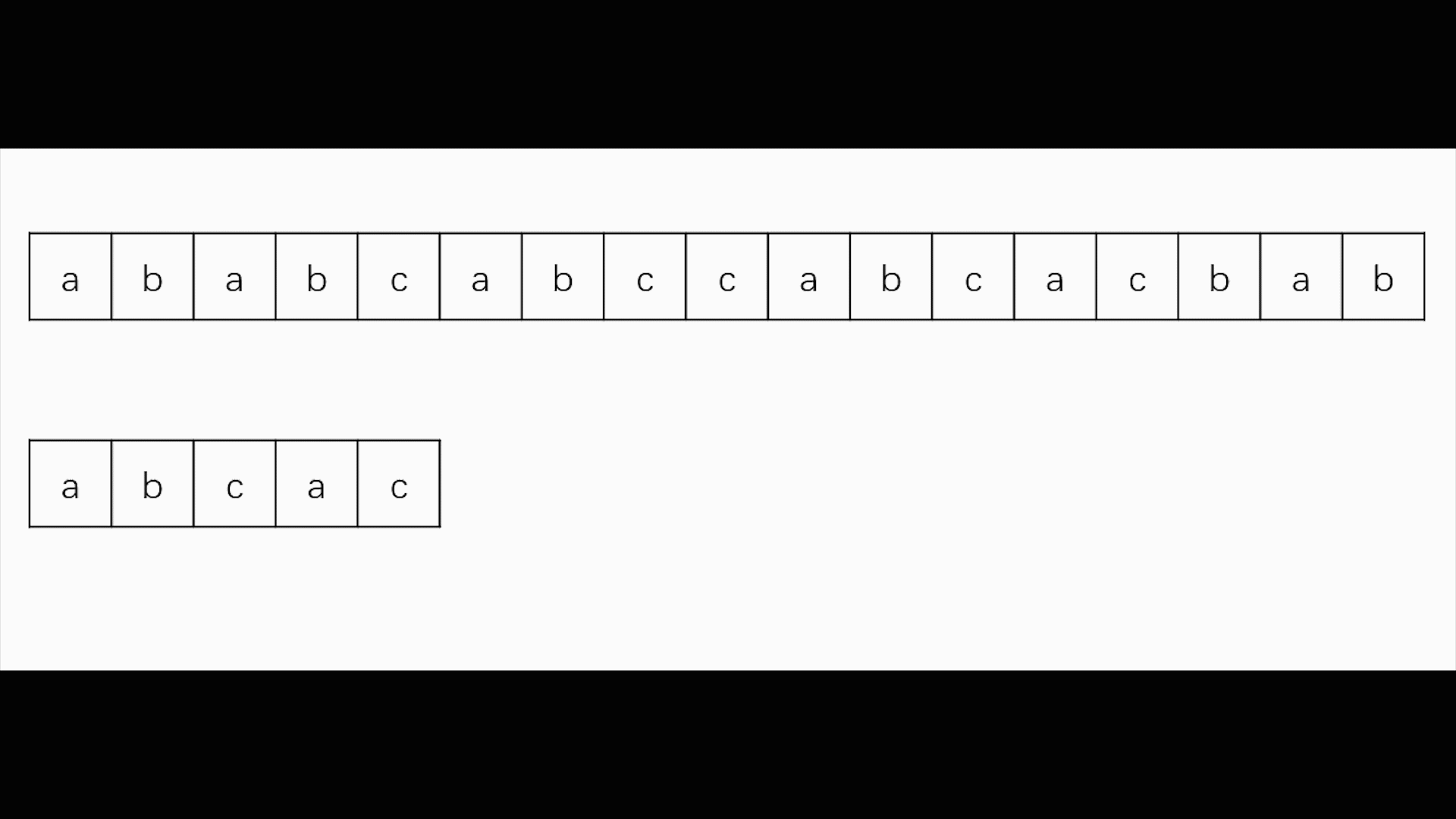模板:
// s[]是长文本,p[]是模式串,n是s的长度,m是p的长度
求模式串的Next数组:
for (int i = 2, j = 0; i <= m; i ++ )
{
while (j && p[i] != p[j + 1]) j = ne[j];
if (p[i] == p[j + 1]) j ++ ;
ne[i] = j;
}
// 匹配
for (int i = 1, j = 0; i <= n; i ++ )
{
while (j && s[i] != p[j + 1]) j = ne[j];
if (s[i] == p[j + 1]) j ++ ;
if (j == m)
{
j = ne[j];
// 匹配成功后的逻辑
}
}例题:acwing--kmp字符串(831. KMP字符串 - AcWing题库)
给定一个字符串 S,以及一个模式串 P,所有字符串中只包含大小写英文字母以及阿拉伯数字。
模式串 P 在字符串 S 中多次作为子串出现。
求出模式串 P 在字符串 S 中所有出现的位置的起始下标。
输入格式
第一行输入整数 N,表示字符串 P 的长度。
第二行输入字符串 P。
第三行输入整数 M,表示字符串 S 的长度。
第四行输入字符串 S。
输出格式
共一行,输出所有出现位置的起始下标(下标从 0 开始计数),整数之间用空格隔开。
数据范围
1≤N≤10^5
1≤M≤10^6文章来源:https://www.toymoban.com/news/detail-676655.html
输入样例:
3
aba
5
ababa
输出样例:
0 2代码:文章来源地址https://www.toymoban.com/news/detail-676655.html
#include<iostream>
#include<algorithm>
#include<cmath>
#include<cstdio>
#include<string>
#include<queue>
#include<cstring>
#include<sstream>
#include<string.h>
#include<vector>
const int N = 1e5 + 10,M = 1e6 + 10;
using namespace std;
typedef pair<int ,int> PII;
int n,m;
char p[N],s[M];
int ne[N];
int main(){
cin >> n >> p+1 >> m >> s+1;
//求next的过程
for(int i = 2,j = 0;i <= n;i ++){
while(j && p[i] != p[j + 1]) j = ne[j];
if(p[i] == p[j + 1]) j ++;
ne[i] = j;
}
//kmp 匹配过程
for(int i = 1,j = 0;i <= m;i ++){
while(j && s[i] != p[j + 1]) j = ne[j];
if(s[i] == p[j + 1]) j ++;
if(j == n){
cout << i - n << ' ';
j = ne[j];
}
}
return 0;
}到了这里,关于数据结构--KMP算法的文章就介绍完了。如果您还想了解更多内容,请在右上角搜索TOY模板网以前的文章或继续浏览下面的相关文章,希望大家以后多多支持TOY模板网!













